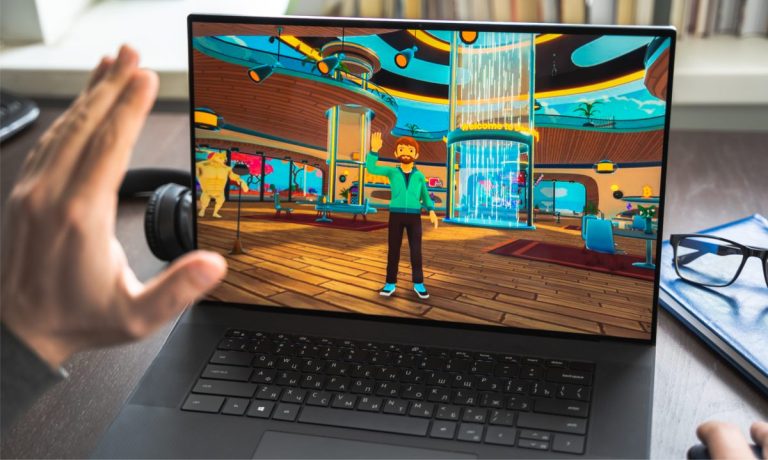
There has been a staggering amount of hype around “the metaverse” over the past six months to a year, with major brands from McDonald’s to Gucci jumping in and shouting it from the rooftops.
But when it comes to the metaverse that marketers are actually talking about now — the blockchain-based worlds like Decentraland and The Sandbox that are, at least partially, up and running — a look at the actual user numbers does more than give pause.
It does, or at least should, raise serious questions about the value of spending any time and money in metaverse marketing at all, at least for now.
If you look at some of the analysts’ excited predictions, it makes sense: Citi puts the total addressable market value of the metaverse, in all of its incarnations, at $13 trillion by 2030, and Morgan Stanley arrived at a similar figure in February — although it toned down the highlighted number to $8.3 trillion by not factoring in as-yet-undetermined new immersive marketing experiences.
But if you dig down in that Citi report, you’ll see that they reached that number by assuming the metaverse would replace the internet altogether in less than a decade, adding the value of “internet-related revenue to that of the physical-world activities being displaced.”
So, what are you getting for your marketing dollars in 2022? Eyeballs? Click-throughs?
No.
Or at least, not a whole lot.
Is Anyone Actually Using It?
In March, the number of active daily users in Decentraland was 978, according to crypto industry news outlet CoinDesk. On June 2, the metaverse’s blog claimed more than 8,000. Decentraland’s MANA token has a market capitalization of $1.8 billion as of Wednesday (June 8).
CoinDesk put The Sandbox’s active daily users at 1,180 in March. Its market cap was $1.6 billion.
In a June report, the U.S. crypto exchange Kraken’s Intelligence unit said “user activity in the metaverse … remains notably nascent.”
Another dismal statistic involves the nonfungible tokens (NFTs) that make up everything in decentralized, blockchain-based metaverses: individual avatars, wearables (like handbags that outsell their real-life counterparts) even buildings and plots of land.
It’s been said a lot lately that the market for NFTs is overheated and starting to cool rapidly — the tokens that carry collectables like Bored Ape Yacht Club’s snappily dressed cartoon primates, owned by the likes of Madonna and Eminem — have seen six-figure prices tumble. But there is still a big market for NFT collectables — in 2021, it reached $17.7 billion in sales and resales, according to a March study by NFT industry data site NonFungible.com and L’Atelier BNP Paribas, Axios reported.
And Kraken’s report said the sales of metaverse NFTs make up 7% of total NFT sales over two years, which doesn’t sound too bad. But the active market wallet count of metaverse NFT buyers?
Just 0.0002% of all NFT sales.
Very few people are buying very expensive metaverse NFTs. That hints that collectors investing in the NFTs, not people actually wandering around with a Gucci handbag and Nike sneaker NFTs on their avatars.
Easy to Enter
Another thing about the metaverse is that there is a very low barrier of entry. Minting an NFT costs $25 to $75, depending on which blockchain you use and when you do it, and costs are substantially lower in bulk.
And setting up a virtual venue, even complex ones like the one WMG Land that Warner Music Group is setting up in The Sandbox in order to give concerts and hold other music-themed events for its artists, don’t take much in the way of development.
The only real first-mover advantage from a metaverse marketing perspective is getting the right plot of land. Metaverses like Decentraland are setting up virtual neighborhoods by clustering industries like fashion — which has embraced the metaverse more aggressively than any other — into a single area good for wandering.
So, it’s arguable that the blockchain version of real estate’s maxim location, location, location does apply, to an extent. That’s especially relevant as metaverses are already seeing avatars “teleporting” to stations in central locations of those neighborhoods. That said, there’s lots and lots of room in the metaverses under development.
Open World — or Tightly Controlled Game?
Another question is whether the highly hyped “Web3” version of the metaverse — the ones built on blockchain and pitched as decentralized, creator-controlled worlds, will come out on top.
The Roblox game world versions of the metaverse, meanwhile, has been flying under the marketing radar for 18 years and has had more than 200 million average monthly users for more than a year, and more than 150 million since the start of 2020.
And Meta’s as-yet-unbuilt, or really even described, metaverse sucked down $10 billon in R&D in 2021, with another $3 billion in in the first quarter this year. With 2.3 billion users on Facebook and presumably easier to port and attract, it will likely have big numbers. But it’s also many years off — the company has even said the immersive VR technology needed to get the full metaverse experience doesn’t exist yet.
Much has been made of the huge concerts by artists like rapper Travis Scott and Ariana Grande, which attracted more than 10 million attendees each to Fortnite. But they were in an existing, and closely controlled, massively multiplayer game world being slowly expanded to include a metaverse. Fortnite reports 350 million registered users, and 15 million average players online concurrently.
Buying Coverage
Of course, there is one more answer that makes sense: Spending marketing dollars to get buzz that you’re in the metaverse. Note than Microsoft hyped the metaverse potential of its $69 billion Blizzard Activision purchase very loudly — and got a whole lot of coverage.
And those fashion houses? Vogue, Harper’s Bazaar and other leading industry publications are giving the metaverse a lot of play.